The ZPlugin ZColorin ZBrushis an essential tool that helps you efficiently select, organize, and apply colorsto your subtools. In this tutorial, we will show you how to fully harness the potential of ZColor. You will learn how to save, import, and export color palettes to optimize your workflows.
Key insights
- With ZColor, you can select and organize colors directly from subtools.
- The plugin allows for the creation and management of color palettes.
- You can efficiently adjust color values, saturation, and brightness.
- The easy importing and exporting of palettes improves your workflow.
Step-by-Step Guide
Step 1: Select colors from an existing subtool
To select colors from a subtool, you first need to open the object from which you want to take the color. To do this, go to the demo projects and select any subtool. To capture a color, press the C key and click on your mesh. This will capture the current color value. Note that only the hue is captured, while brightness and saturation are not taken into account.
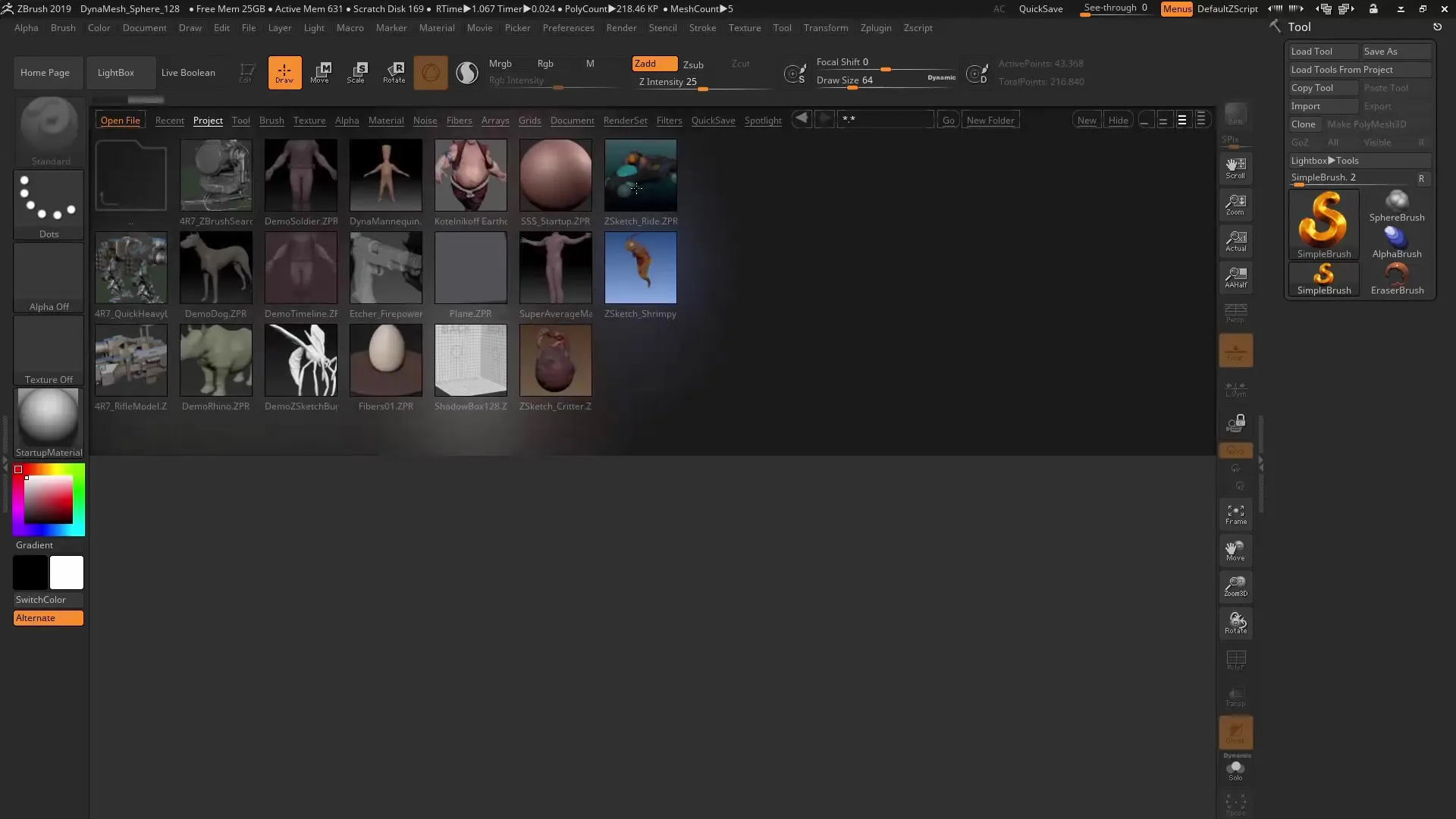
Step 2: Select a new material for your object
You may want to apply a new material to your object. To do this, select the material channel and set the material to “SkinShade 4”. This will give you a lighter material that can better represent the colors. Don't forget to apply the material to your selected object as well.
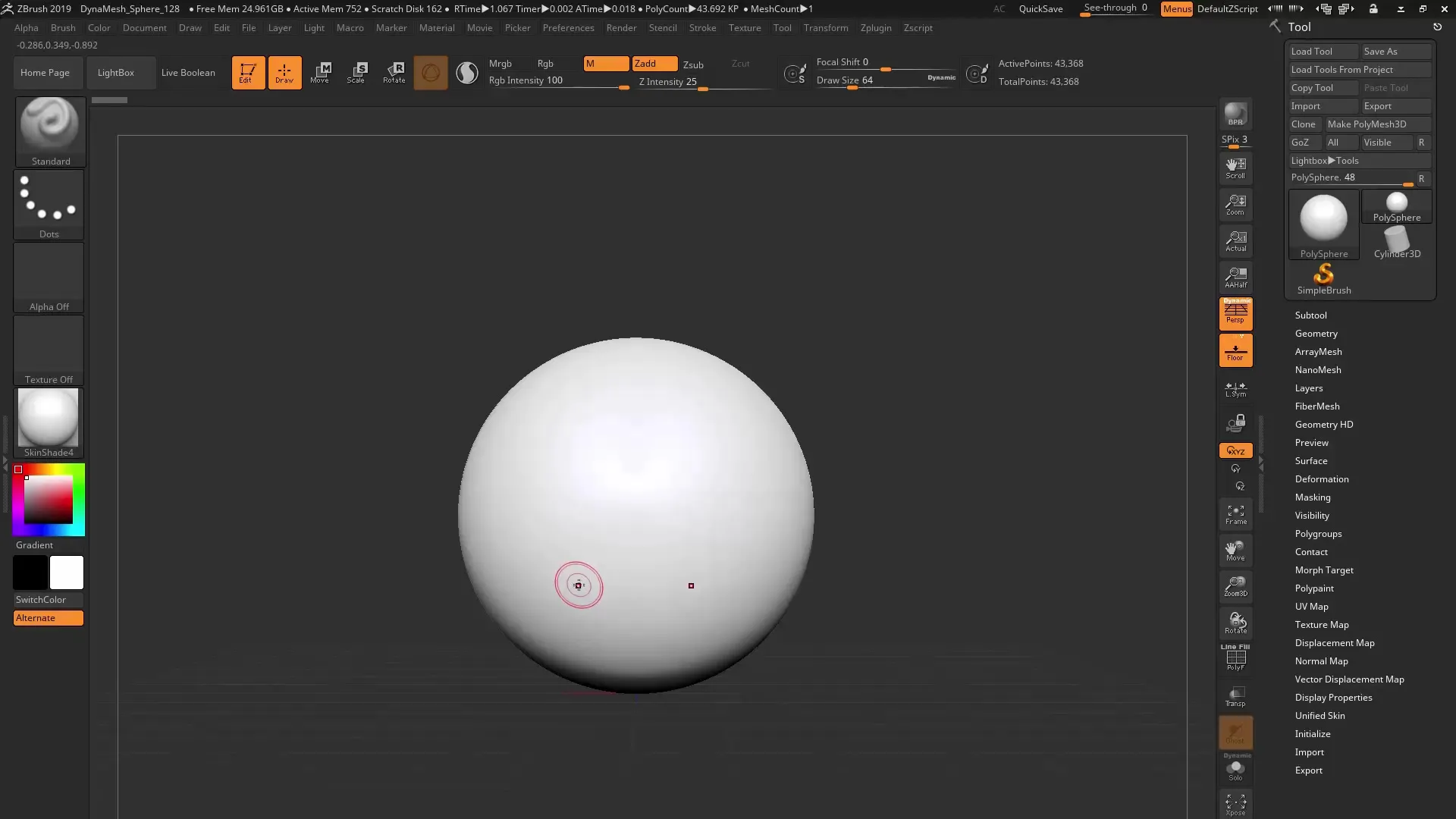
Step 3: Duplicate objects and use symmetry
If you need multiple objects, you can enable symmetry. To do this, hold down the control key and move your object to create duplicates. After disabling symmetry, you only need the central object to continue working.
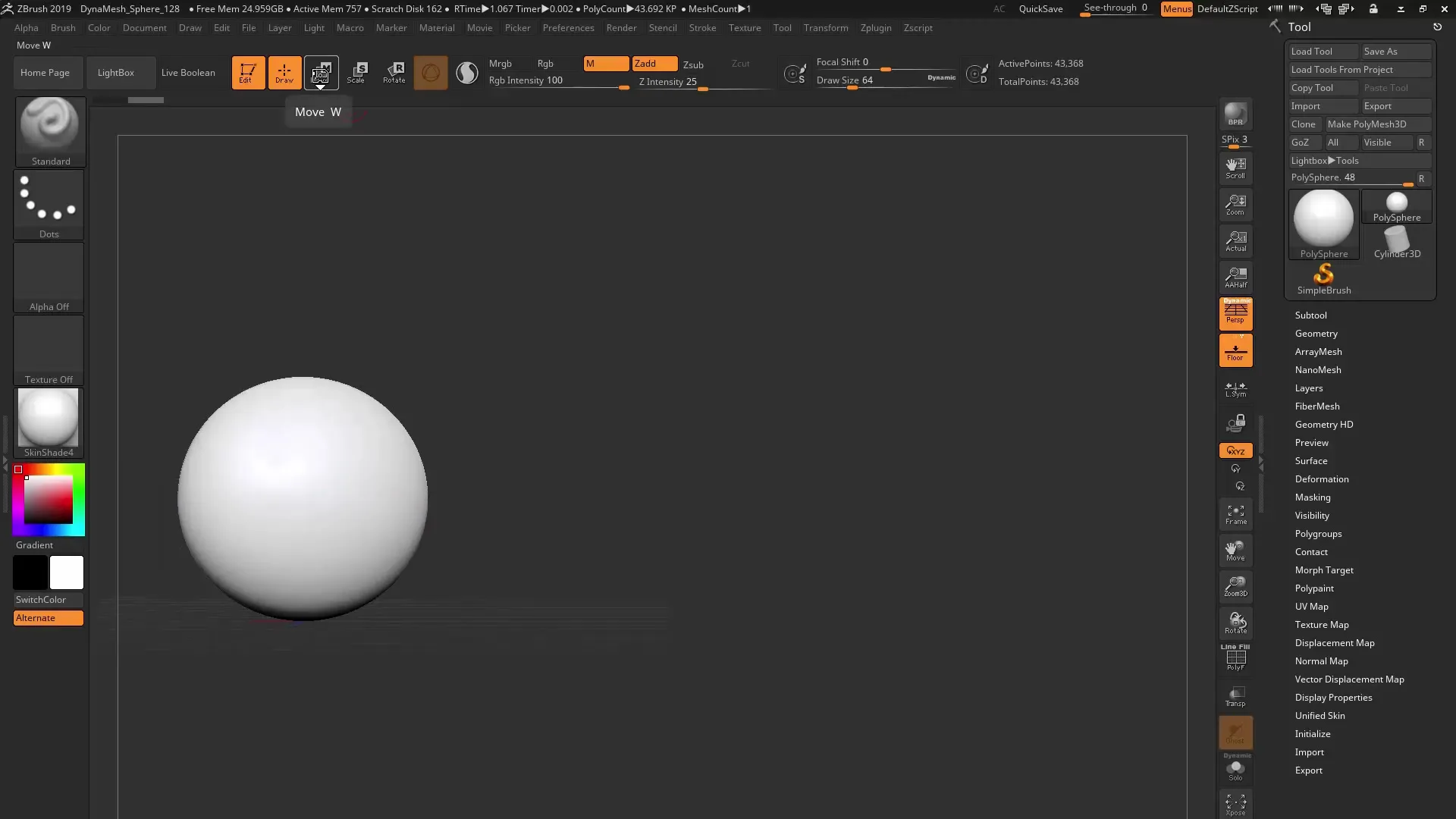
Step 4: Open ZColor Plugin
It's now time to use the ZColor Plugin. You can find it in the ZPlugin folder. Open the ZColor window by clicking on the appropriate menu. The plugin opens as a floating window, allowing you to move it to another screen if necessary.

Step 5: Adjust hue, saturation, and brightness
You can now fine-tune the color values. ZColor provides sliders for hue, saturation, and brightness. You can adjust the respective values according to your preferences or use RGB and hexadecimal values you are familiar with from programs like Photoshop. Select a suitable hue.
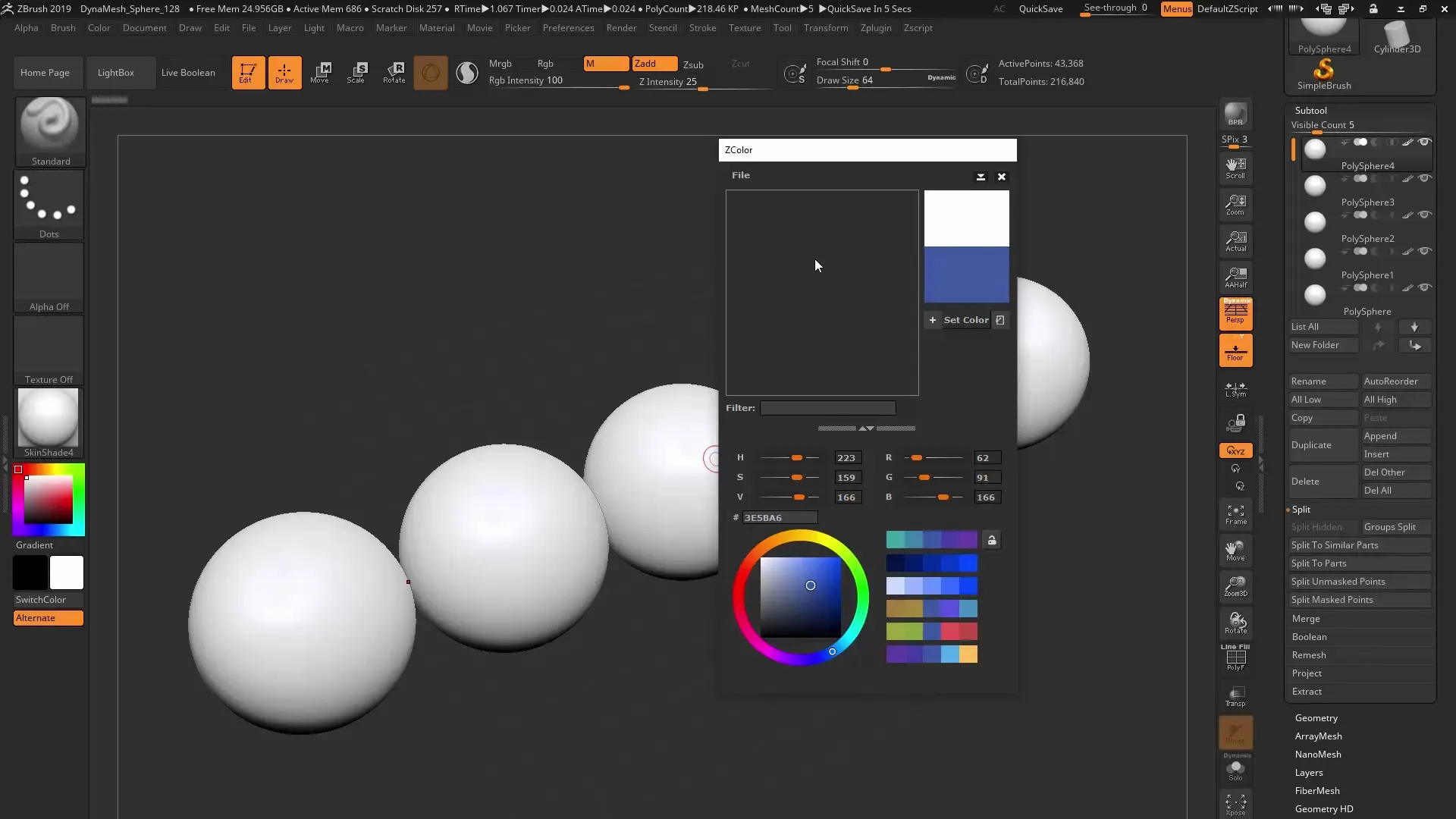
Step 6: Create a color palette
ZColor also offers you the ability to generate color palettes. This happens automatically as you select colors. You have different options to create harmonious color palettes, such as analog, complementary, or triadic color schemes. Choose a suitable color palette and right-click to save it.
Step 7: Apply colors to subtools
One of the most exciting features is the ability to apply colors directly to your subtools. Select a subtool and click on the bucket in the ZColor Plugin. Activate the RGB channel in the process. When you select a color from your palette, the color is applied directly to the object, saving you a lot of time.
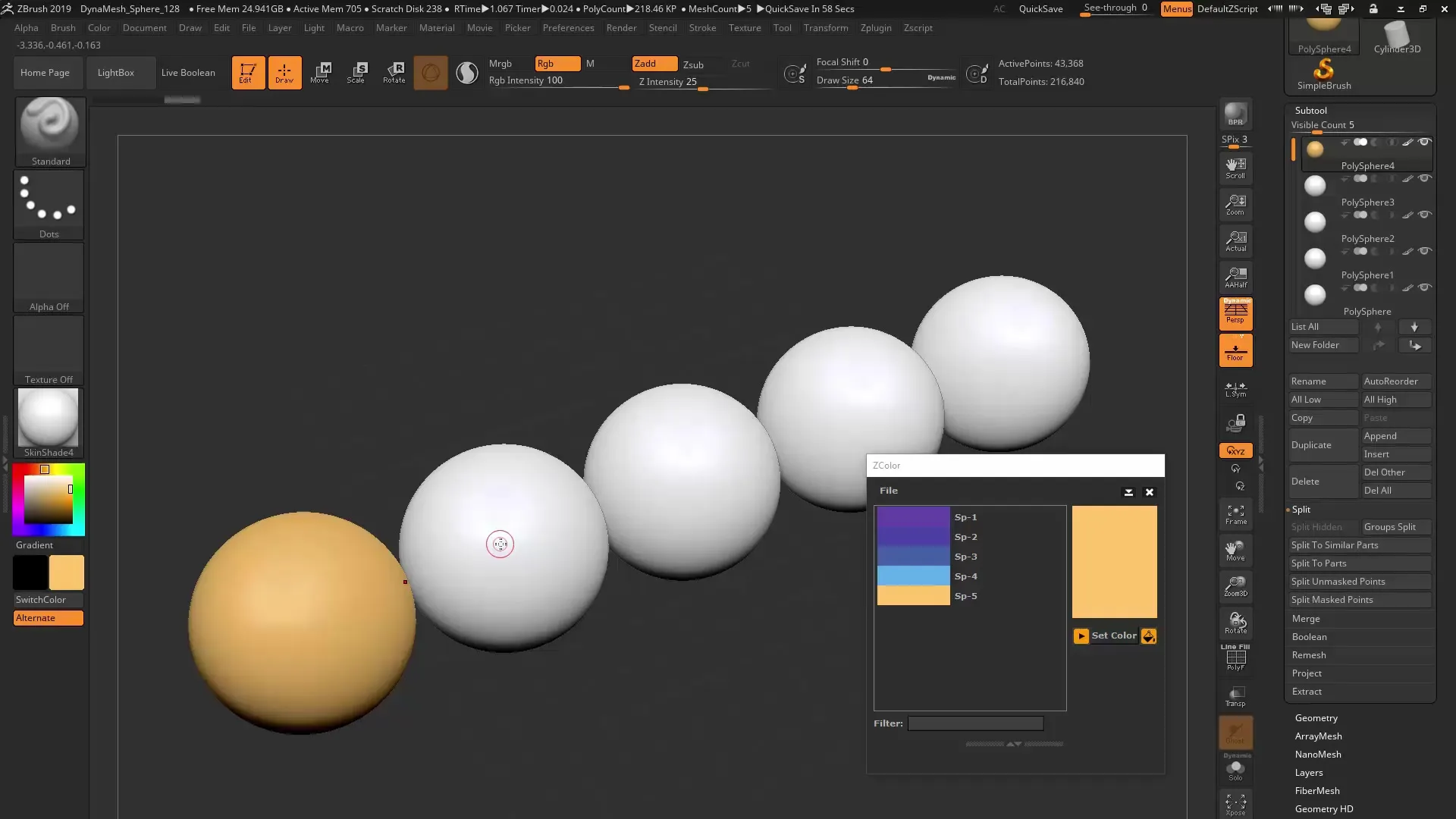
Step 8: Save color palettes
If you like a color palette and want to reuse it, you can save it. You can save it under a custom name on your desktop or in another desired folder. Make sure to choose the correct storage location so you can find the palette later.

Step 9: Import and export color palettes
ZColor not only allows you to save color palettes but also to reload previously saved palettes or import existing ones. Additionally, you can use Adobe color palettes (ACO) by importing them into ZColor or appending them. This way, you have access to your important colors from other programs.
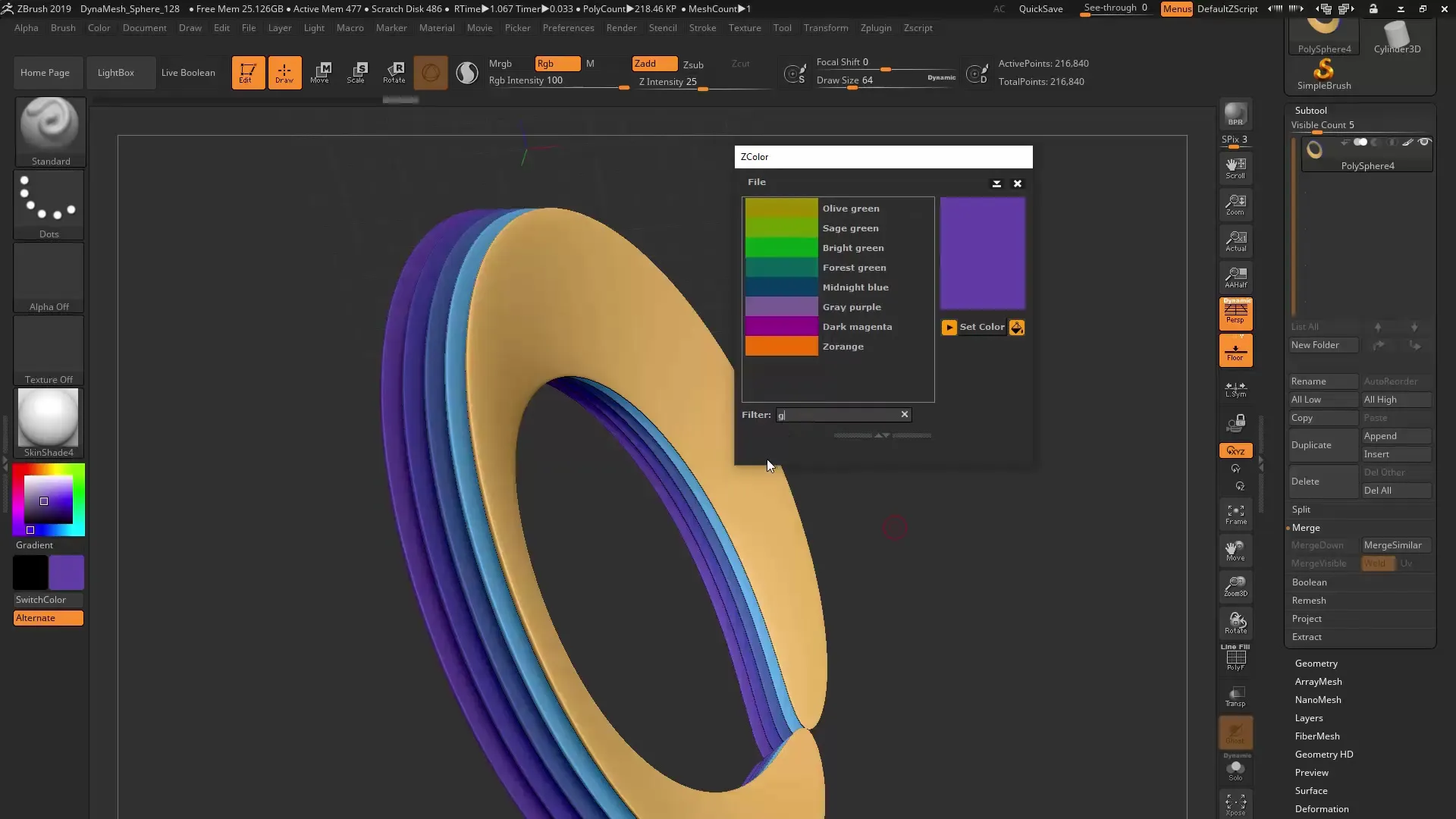
Step 10: Working with different colors
Experiment with different combinations and variations of colors in your models. For example, try using complementary colors for a contrasting effect or work with harmonious tones to achieve an appealing color composition. Use the flexibility of the ZColor Plugin to enhance your designs.
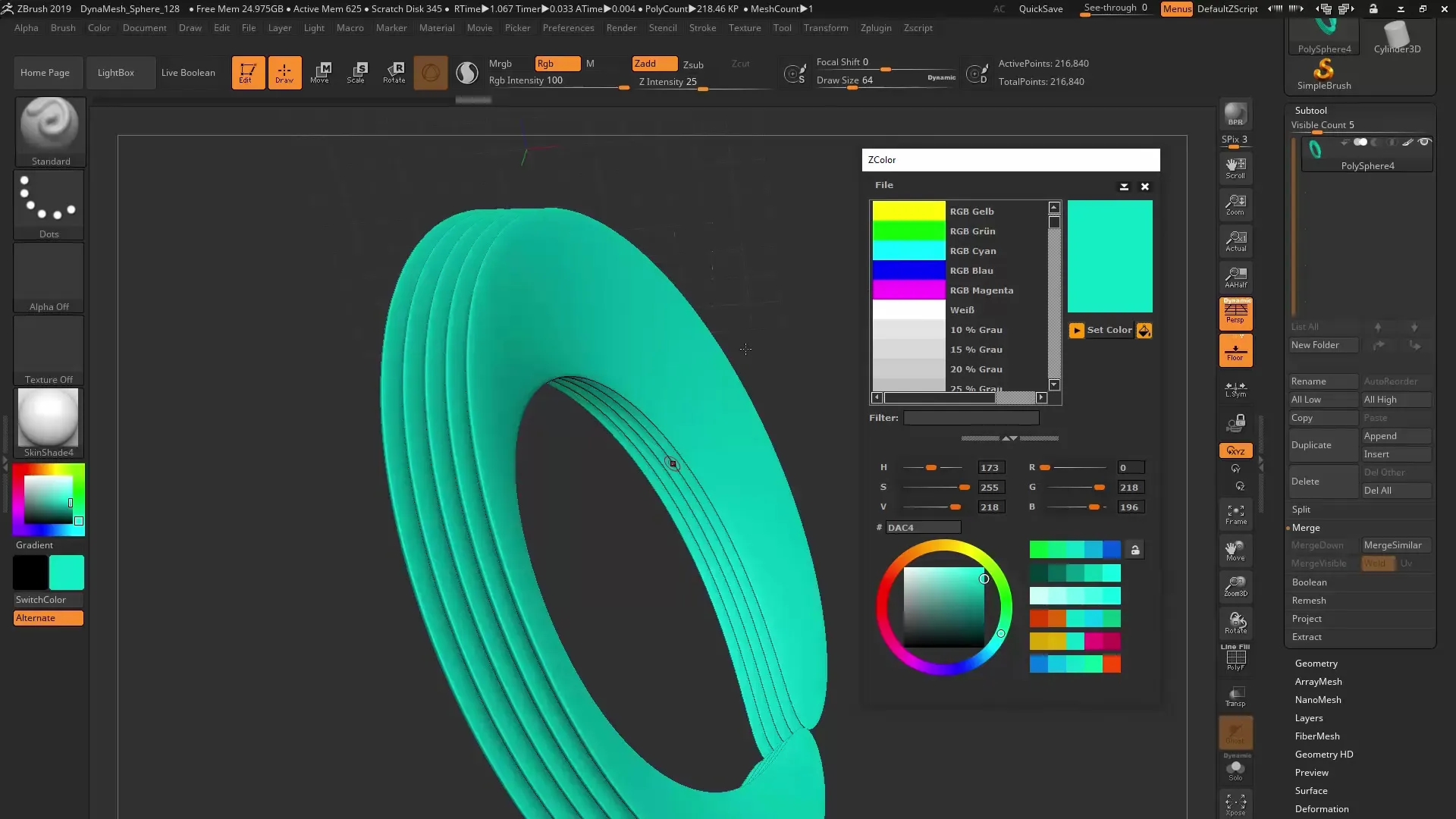
Summary – ZBrush 2019 ZColor Plugin: Easy Color Management
With this tutorial, you have learned the basic functions of the ZColor Plugin. You can now efficiently select, organize, and apply colors in your designs. Experiment with color palettes to achieve the best results for your projects.
FAQ
How do I select colors from a subtool?Press the C key and click on your mesh to capture the color.
Can I save color palettes?Yes, the ZColor Plugin allows you to save, import, and export color palettes.
How do I apply colors to subtools?Select the subtool, click on the bucket in the ZColor Plugin, and activate the RGB channel.
What types of color palettes can I create?You can create analog, complementary, and triadic color palettes.
Can I use Adobe color palettes?Yes, the plugin allows the import and appending of ACO files.


